When looking at a national forest vs national park, determining the differences can be a bit confusing, especially because they share many similarities. This quick guide breaks it all down, so you know which is which and some of the most notable differences!

Have you ever wondered about the difference between the terms national forest vs national park?
They’re often used interchangeably, although inaccurately. While they do have many similarities, including both being public land for recreation, national forests and national parks actually have some important differences.
Most notably, national parks and national forests are managed for different purposes and have very different rules:
- National parks are preserved and protected to keep their natural and cultural resources as untouched as possible.
- National forests are managed to create healthier usable resources, such as fresh water supply and timber.
The rules within each also vary quite a bit. Hunting is permitted in most national forests, while it’s strictly prohibited in national parks. Dogs can generally go anywhere within a national forest, whereas in most national parks, they’re permitted only in small designated areas.
Ready to learn more about the differences between a national forest vs national park? Keep reading!
What’s the difference?
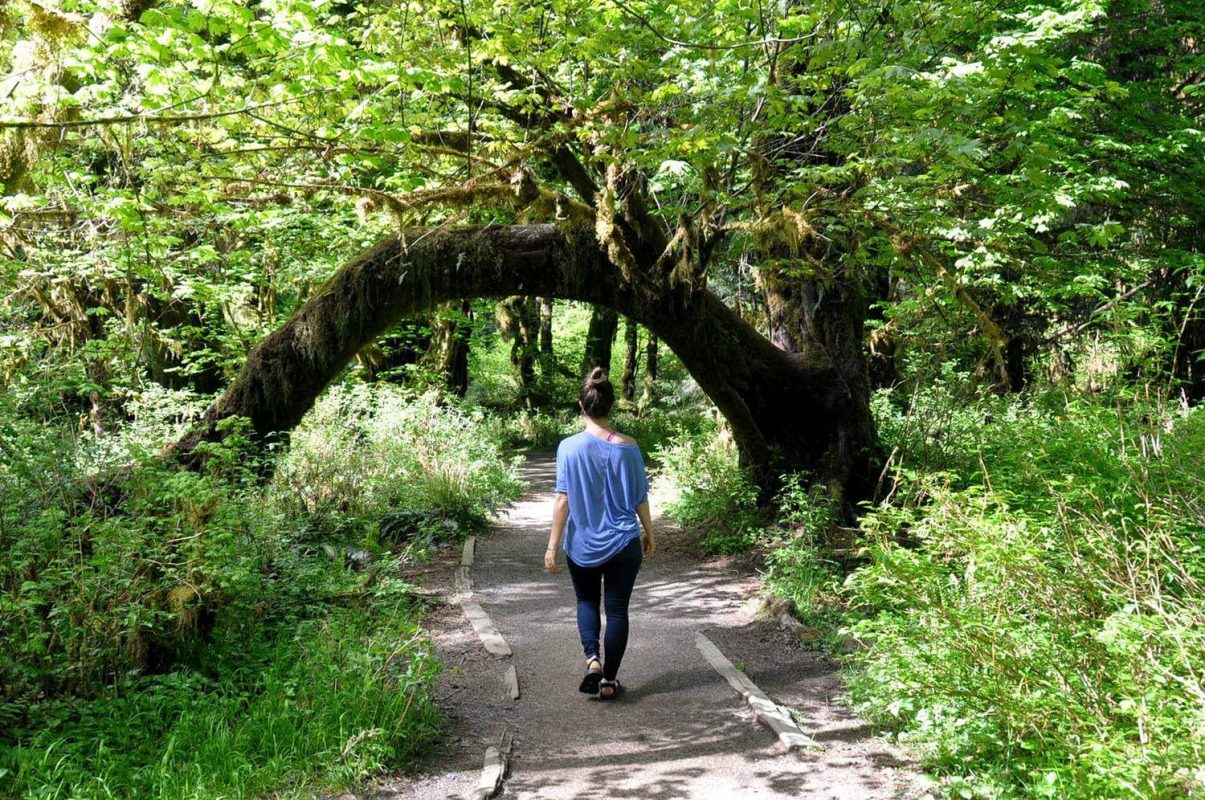
The biggest differences between a national forest vs national park are the land’s management and intended use — and these go hand in hand.
National forests are managed for multiple uses, including wildlife and hunting, timber harvesting, clean water, recreation, fishing, and others. National parks are managed almost solely for preservation, with the goal of keeping them pristine and as close to their natural or original cultural states as possible.
The agencies managing the two are also different. The US Forest Service manages national forests, while the National Park Service manages national parks.
Article contents
- National Park Service
- US Forest Service
- Mission statements
- Stats
- Annual National Park Pass
- Annual Northwest Forest Pass

Who’s in charge of the national parks?
The National Park Service: A branch of the US Department of the Interior, the National Park Service manages all national parks. NPS rangers are referred to as park rangers.
Who’s in charge of the national forests?
The US Forest Service, under the US Department of Agriculture, manages national forests. While many of their job duties are similar to those of park rangers, USFS rangers are officially called forest rangers.
Mission Statements
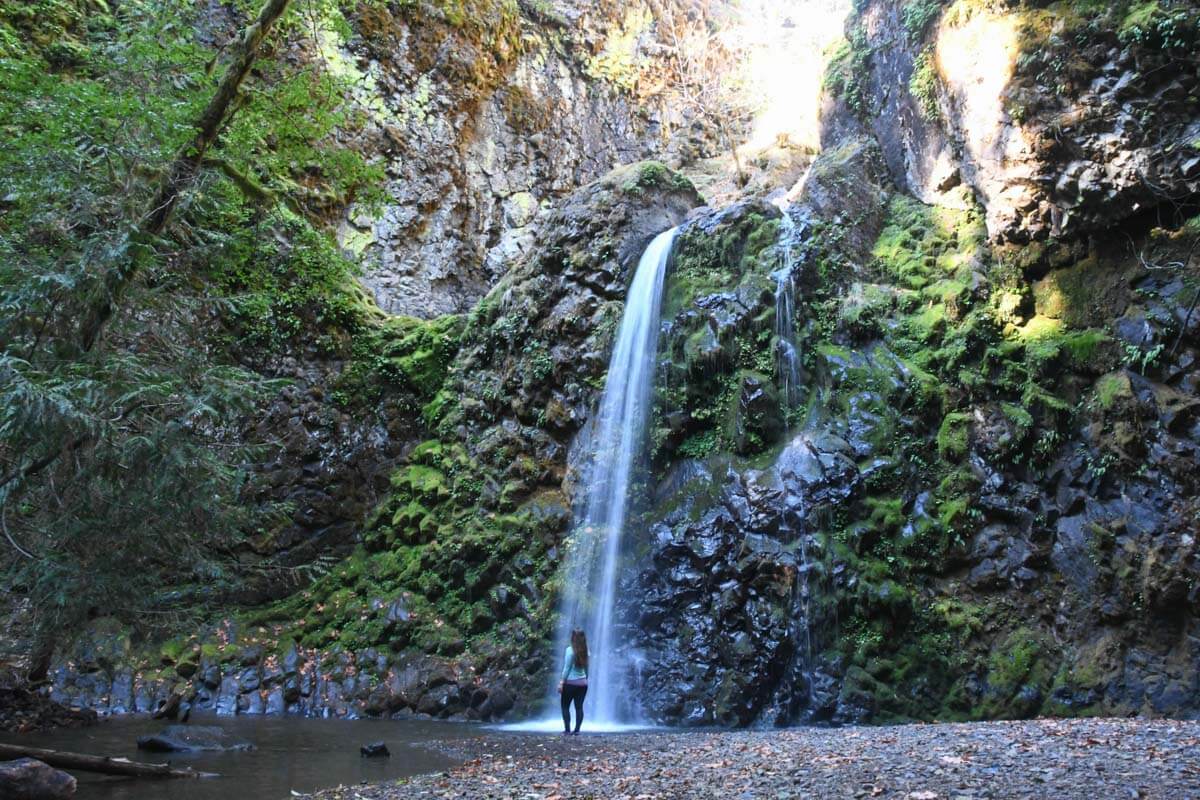
When you compare the two agencies’ mission statements side by side, the differences between a national forest vs national park become a bit more clear.
National Parks
The National Park Service’s mission statement is “to preserve unimpaired the natural and cultural resources and values of the National Park System for the enjoyment, education, and inspiration of this and future generations.”
National Forests
The US Forest Service’s mission is “to sustain the health, diversity, and productivity of the Nation’s forests and grasslands to meet the needs of present and future generations.”
Stats: National Forest vs. National Park
Comparing numbers for national forest vs national park is interesting; it paints a good picture of how different their management truly is!
National Parks
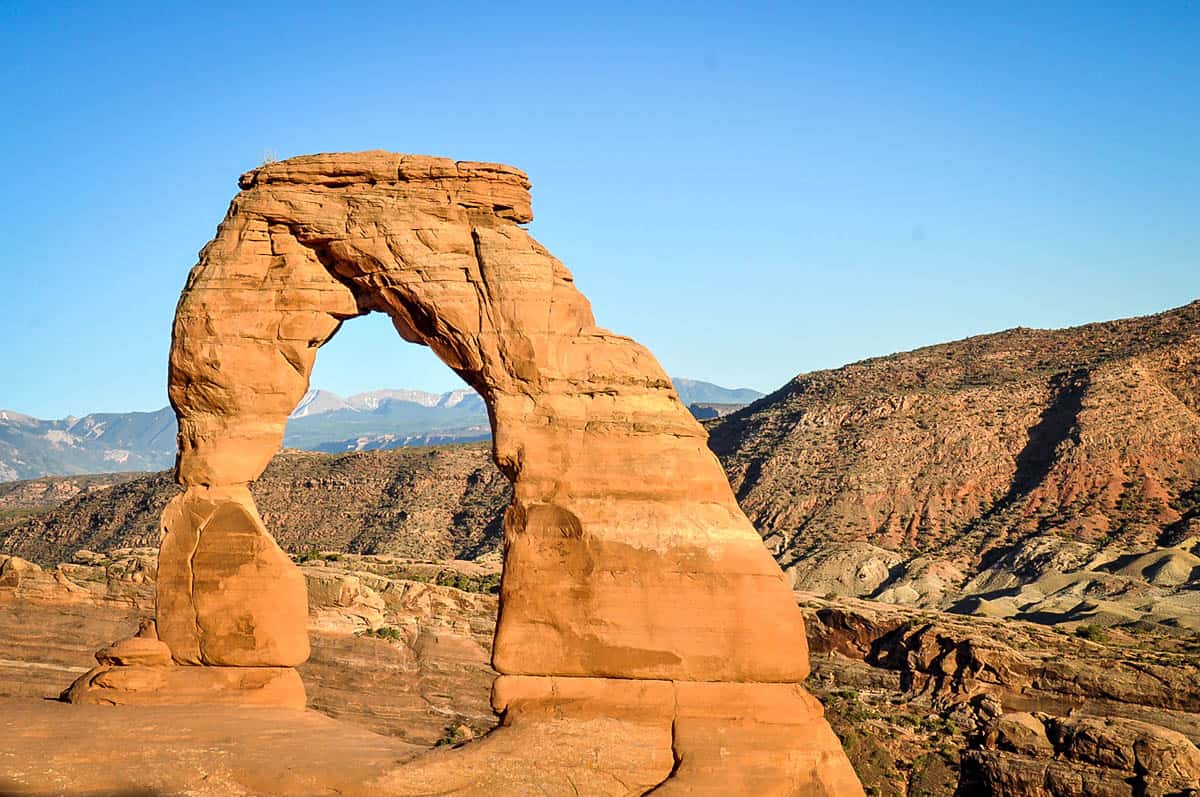
- Acres: 85 million
- # of park units: 424
- 63 national parks
- 83 national monuments
- 4 national parkways
- 19 national preserves
- 2 national reserves
- 18 national recreation areas
- 4 national rivers
- 3 national scenic trails
- 10 national seashores
- 10 national wild and scenic rivers and riverways
- 5 national battlefield parks/sites
- 9 national military parks
- 63 national historical parks
- 74 national historic sites
- 1 international historic site
- 3 national lakeshores
- 31 national memorials
- 11 national battlefields
- The White House
- 11 other designations
National Forests
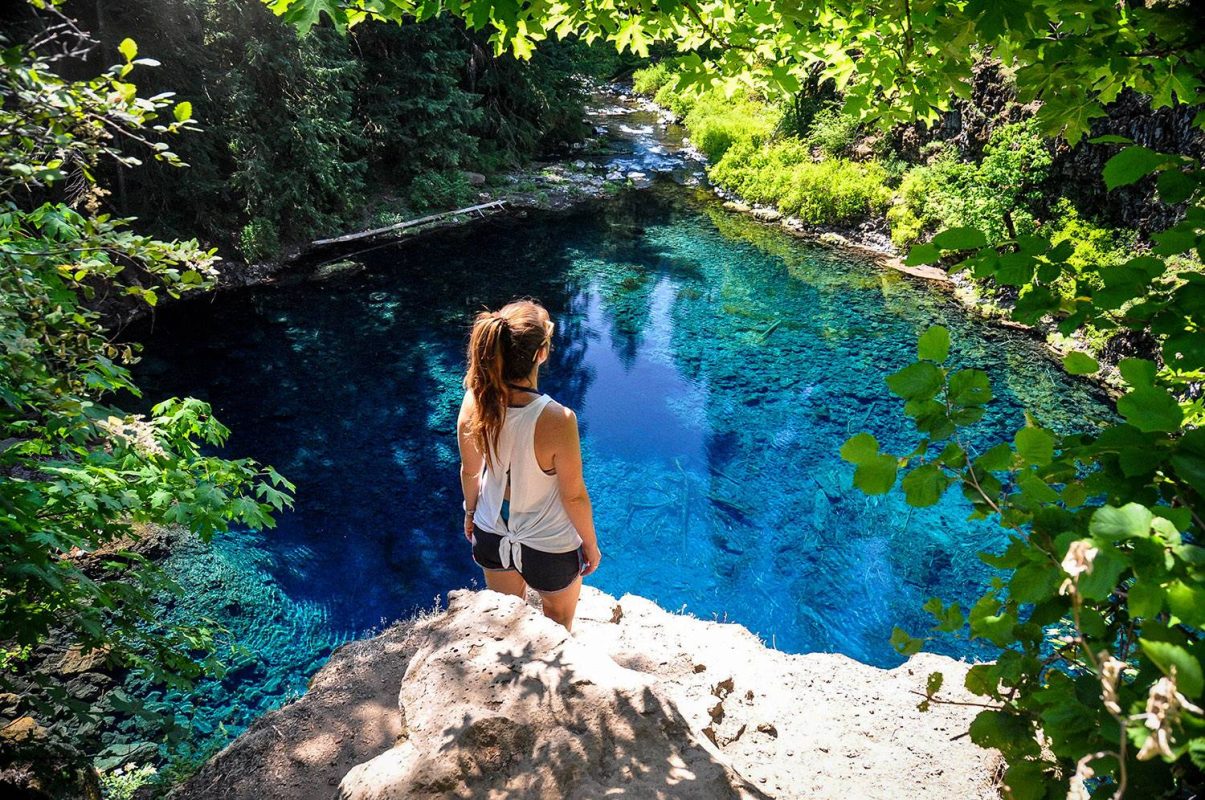
- Acres: 193 million
- 155 national forests
- 20 national grasslands
- 1 national tallgrass prairie
America the Beautiful National Park Pass

If you plan to visit more than one national park a year, or camp in national forest campsites just a couple of times each season, you’ll definitely want to get an America the Beautiful Pass.
Most national parks charge a $30 or $35 admission fee. At just $80 a year, the America the Beautiful Pass quickly pays for itself!
Also referred to as a national parks annual pass, the pass covers entry fees into over 2,000 recreation sites nationwide for one year. Those recreation sites include all 63 national parks, plus all national monuments, national recreation areas, national historic parks, national wildlife refuges, and more.
America the Beautiful passes also offer discounts on campsites and recreation areas in national forests, as well as those operated by the Bureau of Land Management (BLM), US Army Corps of Engineers, US Fish and Wildlife Service (FWS), and the Bureau of Reclamation.
Annual Northwest Forest Pass

The Annual Northwest Forest Pass functions just like the America the Beautiful Pass, but is valid only in national forests in Washington and Oregon.
Specifically, it covers fees at day-use areas and other recreation sites, such as developed trailheads that have toilets or picnic tables.
Annual Northwest Forest Passes are just $30 a year. If you frequently hike in or visit PNW national forests like Cascade or Olympic, it’s a no-brainer! Popular hikes like Colchuck Lake and Tom Dick and Harry Mountain also require a Northwest Forest Pass.
Before you go!
Keep track of all of your national park adventures with this FREE download of our USA National Parks checklist!
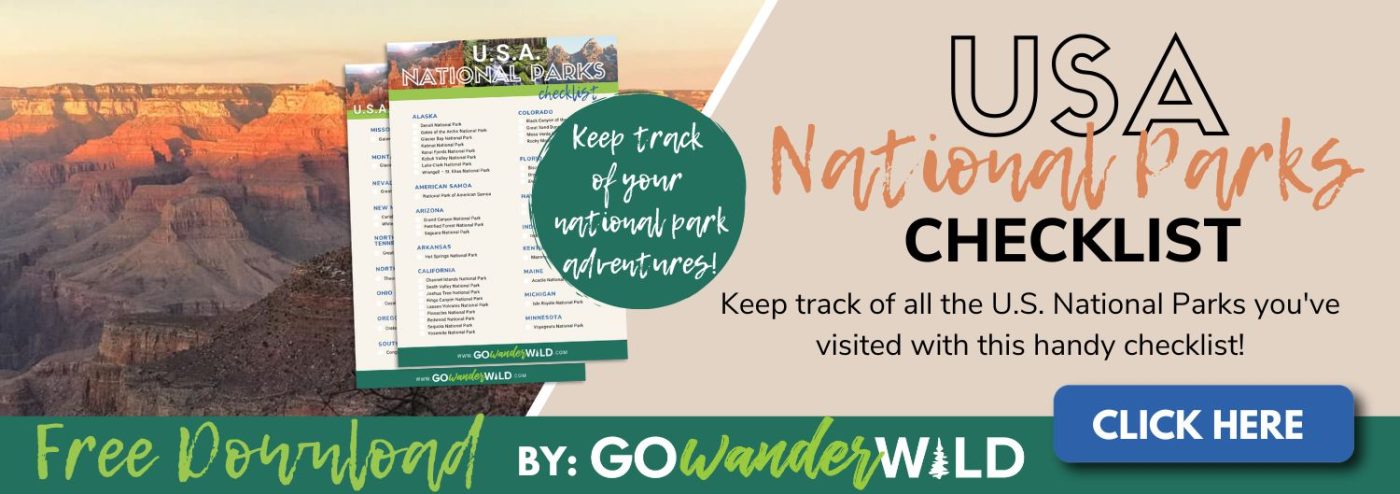

You may also like…
- USA National Parks Checklist & Guide
- 100 Best Adventure Quotes (+ graphics!)
- How to Visit the 7 Wonders of Oregon
- Incredible Washington Hot Springs + Where to Find Them
Save this article on Pinterest for later!
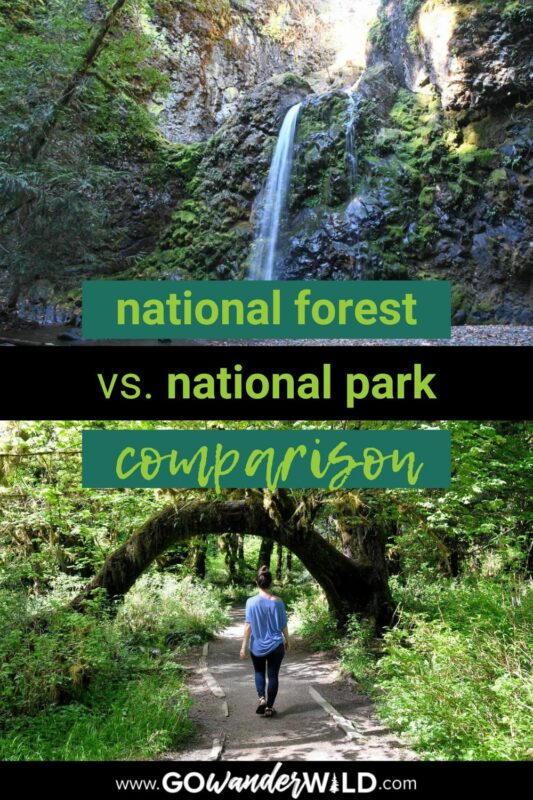
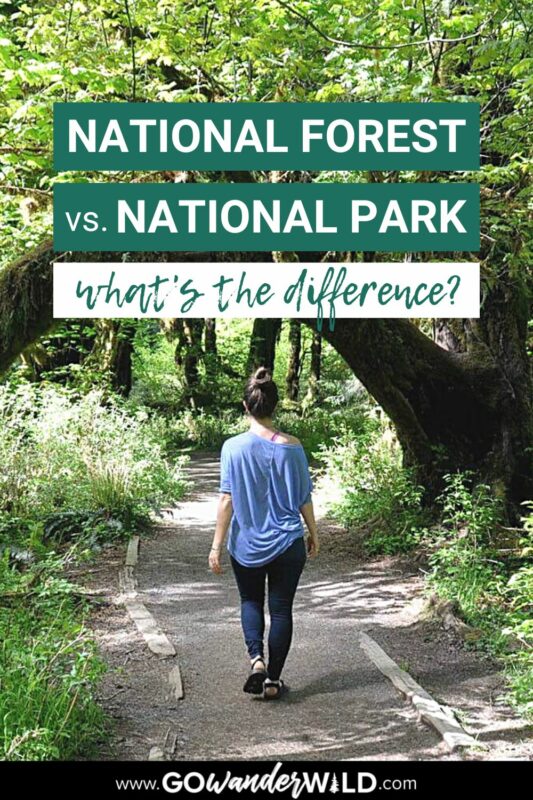
We want to hear from you!
Do you have more questions about comparing a national forest vs national park? Comment below and we’ll do our best to find you answers!

